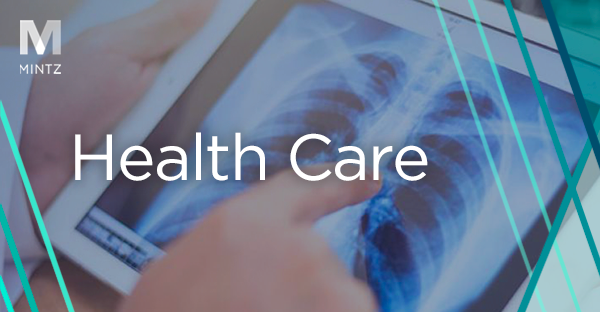
FDA Regulatory
Viewpoints
Filter by:
Rough Seas for COVID-19 Serology Tests Lead to Course Correction by FDA
May 5, 2020 | Blog | By Joanne Hawana, Hope Foster
Responding to increased public and congressional criticism of its arguably too-flexible approach to regulatory oversight of serological tests used to detect COVID-19 antibodies, on May 4, 2020 the Food and Drug Administration (FDA) announced a revised policy aimed at reducing the risks associated with such tests.
Read more
FDA Expands Focus for COVID-19 Response
May 4, 2020 | Blog | By Benjamin Zegarelli
The Food and Drug Administration (FDA) continues to churn out policy statements, guidance documents, and emergency use authorizations (EUAs) to address the COVID-19 public health emergency. At the outset of the pandemic in early 2020, the agency concentrated its efforts on measures relating to devices that may help directly diagnose, treat, or prevent COVID-19, such as facemasks, ventilators, and diagnostic test kits. Recently, however, FDA appears to have shifted its focus to devices that may assist in the defense against the spread of COVID-19. For example, FDA issued enforcement policies and EUAs that help to expand the availability and capability of various remote monitoring devices and systems that can be used to diagnose and monitor medical conditions while mitigating circumstances that could lead to patient and health care workers’ exposure to SARS-CoV-2 (the virus that causes COVID-19) for the duration of the public health emergency.
Read more
FDA Continues Its Diverse Agency Actions in Response to COVID-19 Pandemic
April 22, 2020 | Blog | By Joanne Hawana
Since our last roundup-style blog post on the response of the Food and Drug Administration (FDA) to the COVID-19 public health emergency, the agency has taken a wide variety of additional actions with the goal of getting much-needed medical products into the hands of health care providers on the frontlines of the pandemic as it hits the United States hard. We’ve already covered recent FDA policy changes aimed at expanding the availability of face masks, face shields, and respirators (see prior post here), so today’s post will focus on other emergency actions outside of the personal protective equipment space. Mintz clinical laboratory experts are also preparing separate articles on the diagnostic and antibody testing issues ongoing with the COVID-19 response, so we are not going to discuss testing in today’s post either.
Read more
CARES Act Creates and Updates Drug and Medical Device Shortage Requirements
April 9, 2020 | Blog
In response to the COVID-19 pandemic, the Coronavirus Aid, Relief, and Economic Security (CARES) Act was signed into law on March 25, 2020. In addition to the $2 trillion made available for medical countermeasure development, business relief, and other measures, the CARES Act amends the drug shortage reporting requirements and creates new requirements related to medical device shortages. With increased demand for products used to diagnose and treat COVID-19 patients and the stress placed on the manufacturing and delivery of vital products, having more information about drug, drug ingredient, and device shortages is becoming more critical.
Read more
FDA Places Two Food Orders on Restaurants’ Tables
April 8, 2020 | Blog | By Daniel Herling
The food industry has been upended by the recent COVID-19 pandemic – restaurants and bars are scrambling to adjust to a new way of life after governors across America issued statewide “stay at home” orders in response to the coronavirus pandemic. Restaurants are now only permitted to serve take-out or drive-thru orders, and some restaurants have transformed themselves into neighborhood markets, or bodegas, selling food items not labeled for retail.
Read more
FDA Expands Face Mask Enforcement Policy to Allow Imports of KN95 Respirators
April 7, 2020 | Blog | By Benjamin Zegarelli
On April 2, 2020, the Food and Drug Administration (FDA) issued a revised temporary enforcement policy regarding the manufacture and distribution of face masks and filtering facepiece respirators during the COVID-19 public health emergency. The revisions address two key omissions from the initial policy, which was released on March 25, 2020 and which we summarized in a prior blog post. Specifically, the agency has now provided guidance on: (1) the importation of respirators not approved by the National Institute for Occupational Safety and Health (NIOSH) and (2) the manufacture and distribution of face shields. FDA also added a question and answer about respirators manufactured in China to the KN95 air filtering standard (the Chinese equivalent of the U.S. government’s N95 standard) to its FAQ page on the personal protective equipment shortage and issued an emergency use authorization for non-NIOSH-approved respirators made in China.
Read more
And Now For Something Completely Different: FDA Actions to Alleviate Regulatory Burdens For Product Sponsors During the COVID-19 Pandemic
April 6, 2020 | Blog | By Joanne Hawana
We’ve been blogging periodically on the various actions taken and enforcement policies being developed by the Food and Drug Administration (FDA) to support and expand the national response to the declared COVID-19 public health emergency. At the same time, however, the agency has also been taking various steps to help medical product sponsors and consumer product manufacturers and distributors prioritize their ongoing regulatory compliance activities during this challenging period for business-as-usual.
As we’ve already covered in depth (see prior post here), on March 18, 2020 the agency issued guidance for clinical trial sponsors regarding how to ensure the continued safety and informed consent of human subjects. That critical guidance document was updated on March 30 to add a new appendix with common sponsor questions, and FDA has stated that it plans to further update the appendix as new questions arise. Over the past several weeks, the agency has issued the following important policies on other issues that also seek to provide some much-needed regulatory relief to FDA-regulated manufacturers and distributors.
Read more
As we’ve already covered in depth (see prior post here), on March 18, 2020 the agency issued guidance for clinical trial sponsors regarding how to ensure the continued safety and informed consent of human subjects. That critical guidance document was updated on March 30 to add a new appendix with common sponsor questions, and FDA has stated that it plans to further update the appendix as new questions arise. Over the past several weeks, the agency has issued the following important policies on other issues that also seek to provide some much-needed regulatory relief to FDA-regulated manufacturers and distributors.
Coronavirus Relief Bill Includes Surprise Addition: OTC Monograph Reform Bill Becomes Law
March 30, 2020 | Blog | By Joanne Hawana
As a follow up to our recent blog post, FDA User Fees: Highlights from FDARA & Our Forecast for the Next Round, President Trump signed the bipartisan over-the-counter (OTC) monograph teform bill into law on March 27, 2020. The passage of the OTC monograph reform bill is a surprise addition into the Coronavirus Aid, Relief, and Economic Security Act (CARES Act), the third COVID-19 stimulus bill enacted since the pandemic began. The reform legislation represents the first significant update to federal oversight of OTC drug products since 1972. It enables the Food and Drug Administration (FDA) to quickly respond to safety concerns and keep pace with innovation in hopes of protecting consumers from unsafe drugs and permitting manufacturers to market new products more expeditiously.
Read more
FDA Creates Regulatory Exemptions for Face Masks and Respirators in Response to the Spread of COVID-19 and Critical PPE Shortages
March 27, 2020 | Blog | By Benjamin Zegarelli
On March 25, 2020, the Food and Drug Administration (FDA) issued a temporary policy relating to enforcement of regulatory requirements for face masks and respirators during the COVID-19 crisis. Since the public health emergency began, the United States has experienced a shortage of masks, respirators, and other personal protective equipment (PPE) which are critically needed for health care workers caring for COVID-19 patients in all states. FDA previously created emergency use authorizations (EUAs) for NIOSH-approved disposable respirators for use in health care settings and imported non-NIOSH-approved disposable respirators, but the temporary enforcement policy represents an attempt to open the manufacturing, importation, and distribution flood gates to make more masks and respirators available as quickly as possible.
Read more
FDA Issues Guidance Addressing COVID-19 Interference with Clinical Trials
March 21, 2020 | Blog | By Dianne Bourque, Benjamin Zegarelli
In recognition of the widespread disruptions the COVID-19 crisis is posing to planned and ongoing clinical trials at sites throughout the United States (and global clinical sites), the Food and Drug Administration (FDA) issued on Wednesday, March 18 a guidance describing potential considerations for adjusting trial processes and, potentially, protocols and statistical analysis plans to mitigate any difficulties meeting trial objectives due to interference from the virus and related social and governmental restrictions. The document, titled FDA Guidance on Conduct of Clinical Trials of Medical Products during COVID-19 Pandemic, describes various potential complications, such as subjects being unable to travel to the trial site, loss of access to investigational product, or the need to screen subjects for COVID-19, as well as general recommendations for addressing them.
Read more
FDA’s Ongoing Response to the COVID-19 (Coronavirus) Outbreak
March 18, 2020 | Blog | By Joanne Hawana, Benjamin Zegarelli
As we write this update on the actions of the Food and Drug Administration (FDA), more state and local governments (along with private businesses and employers) are taking sweeping actions to protect the public from the continued spread of COVID-19. The federal response to what is now a pandemic of COVID-19 started off slowly, but we are now seeing frequent and promising announcements from FDA and other agencies within the Department of Health and Human Services.
We published our first installment highlighting FDA’s role in this public health emergency on March 4, 2020 (see our prior post here). In the two weeks that have elapsed since then, FDA has taken several actions related to COVID-19 testing and other important public health protections which are explained below. One of the most striking things about the list of actions included in this post may be how diverse and broad FDA’s authorities are and what a substantial role the agency plays in protecting Americans from a variety of different types of harm.
Read more
We published our first installment highlighting FDA’s role in this public health emergency on March 4, 2020 (see our prior post here). In the two weeks that have elapsed since then, FDA has taken several actions related to COVID-19 testing and other important public health protections which are explained below. One of the most striking things about the list of actions included in this post may be how diverse and broad FDA’s authorities are and what a substantial role the agency plays in protecting Americans from a variety of different types of harm.
The VALID Act, Aiming to Reform the Regulation of Diagnostic Products, Is Finally Introduced in Congress
March 12, 2020 | Blog
Following years of discussion, on March 5, 2020, U.S. Representatives Larry Buchson (R-IN) and Diana DeGette (D-CO) and U.S. Senators Richard Burr (R-NC) and Michael Bennet (D-CO) introduced identical versions of the Verifying Accurate and Leading-edge IVCT Development (VALID) Act in both chambers of Congress. The bipartisan legislation closely tracks existing medical device laws, with some notable exceptions, discussed below and in a prior post. If enacted, many regulatory elements familiar to in vitro diagnostic (IVD) and other medical device manufacturers would be applied to clinical laboratories that develop their own tests, commonly known as laboratory developed tests (LDTs). The bill also includes elements that are priorities for the Food and Drug Administration (FDA), including a program conceptually similar to pre-certification, third-party review, and Collaborative Communities. Unlike previously-circulated discussion drafts, the introduced bills include specific language designed to address public health emergencies, including COVID-19.
Read more
FDA Gives a CBD Update: Spoiler Alert! It’s More or Less the Same Old News
March 11, 2020 | Blog
We have previously blogged about the regulation of cannabidiol (CBD) products by the Food and Drug Administration (FDA) and the government’s actions to create a comprehensive regulatory framework for CBD, which includes introducing the Cannabidiol and Marijuana Research Expansion Act and hosting an FDA Public Hearing in May 2019 to obtain scientific data and safety information regarding cannabis-derived compounds. Most recently, on March 5, 2020, Commissioner Stephen Hahn provided an update to FDA’s efforts to increase education, research, and enforcement in this area. While the update alerted consumers, health professionals, and industry of FDA’s ongoing efforts to regulate CBD products, the efforts themselves are not dramatically new.
Read more
Clinical Trial Results Will See Daylight After HHS Final Rule Is Set Aside
March 5, 2020 | Blog
Some clinical trial sponsors and principal investigators will be digging through their archives soon as a result of a recent ruling in the case of Seife v. U.S. Department of Health and Human Services, case number 1:18-cv-11462 (S.D.N.Y. 2018). In Seife, the plaintiffs – an investigative journalist and a former Associate Commissioner at the Food and Drug Administration (FDA) – challenged a Department of Health and Human Services (HHS) final rule that implemented clinical trial reporting requirements mandated by the Food and Drug Administration Amendments Act (FDAAA).
Read more
FDA’s Evolving Response to the COVID-19 (Coronavirus) Outbreak
March 4, 2020 | Blog | By Joanne Hawana
Within the U.S. Department of Health and Human Services (HHS), many agencies have responsibility for responding to public health emergencies. The Centers for Disease Control and Prevention (CDC), as its name implies, is at the forefront of the COVID-19 (coronavirus) outbreak as the government seeks to control and prevent the spread of the virus in the United States. The National Institutes of Health (NIH), particularly the National Institute of Allergy and Infectious Diseases, are also involved, primarily conducting research into the sources, cause, and means of transmission of the new virus and coordinating vaccine development efforts. The Food and Drug Administration (FDA) is responsible for assuring the safety and effectiveness of medical products and therefore has oversight over any clinical trials for promising coronavirus treatments (drugs, vaccines, devices), as well as authority to authorize the marketing of any such product. The agency oversees the drug supply chain and monitors drug and device shortages. This blog post covers steps that FDA has taken to mitigate potential drug and device shortages related to coronavirus and to otherwise respond to the coronavirus situation.
Read more
Collaborative Communities
February 27, 2020 | Video
ML Strategies’ Aaron Josephson explains why FDA is looking to Collaborative Communities to help solve challenges in 2020 and the potential benefit to companies who participate in the development of public policy.
Read more
Closing the Orphan Drug Act Loophole
February 18, 2020 | Blog
On Tuesday, February 11, 2020, Senators Bill Cassidy (R-LA), Jeanne Shaheen (D-NH), and Tammy Baldwin (D-WI) introduced legislation to eliminate the “orphan drug loophole.” Current law allows the Food and Drug Administration (FDA) to grant seven years of market exclusivity to a drug manufacturer if the drug is intended to treat a disease or condition affecting fewer than 200,000 patients in the U.S., or less commonly, if the manufacturer cannot expect to recover the costs of developing and marketing a drug. In some cases, even if the drug developer meets the orphan drug criterion of having no hope of recovering the costs, the drug does actually become profitable—some significantly so—but competitors are still barred from entering the market with a lower-cost alternative during the 7-year exclusivity period that exists by operation of law. To combat this issue, the recently introduced Senate bill (as well as a nearly-identical House bill introduced in October 2019) targets a loophole that allows market exclusivity under the Orphan Drug Act to be extended for future versions of the same drug without the drug's manufacturer having to show that the drug remains unprofitable.
Read more
FDA User Fee Agreements
February 14, 2020 | Video
In this video, Aaron Josephson discusses FDA user fee agreements, the timeline for the reauthorization process, and why it is important for companies with FDA-regulated products to be paying attention now.
Read more
FDA Regulatory Due Diligence
February 7, 2020 | Video | By Joanne Hawana
Joanne Hawana explains how FDA regulatory due diligence fits into the broader diligence that is done when a transaction involves an FDA-regulated entity as well as what the team is looking for when conducting an FDA regulatory diligence project.
Read more
FDA’s Approach to Direct-to-Consumer Genetic Testing
February 7, 2020 | Video | By Joanne Hawana
Joanne Hawana talks about the rise in direct-to-consumer genetic testing and how FDA has adapted its regulatory approach to such tests over the past few years as it has become more comfortable with genetic testing and sequencing technologies.
Read more
Explore Other Viewpoints:
- Data Centers & Digital Infrastructure
- AI: The Washington Report
- Antitrust
- Appellate
- Arbitration, Mediation & Alternate Dispute Resolution
- Artificial Intelligence
- Awards
- Bankruptcy & Restructuring
- California Land Use
- Cannabis
- Class Action
- Complex Commercial Litigation
- Construction
- Consumer Product Safety
- Corporate Governance (ESG)
- Cross-Border Asset Recovery
- DEI Legal Developments
- Debt Financing
- Direct Investing (M&A)
- Diversity
- EB-5 Financing
- Education & Nonprofits
- Employment
- EnforceMintz
- Environmental (ESG)
- Environmental Enforcement Defense
- Environmental Law
- Environmental, Social, and Corporate Governance (ESG)
- FDA Regulatory
- False Claims Act
- Federal Circuit Appeals
- Financial Institution Litigation
- Government Law
- Growth Equity
- Health Care
- Health Care Compliance, Fraud and Abuse, & Regulatory Counseling
- Health Care Enforcement & Investigations
- Health Care Transactions
- Health Information Privacy & Security
- IP Due Diligence
- IPRs & Other Post Grant Proceedings
- Immigration
- Impacts of a New US Administration
- Insolvency & Creditor Rights Litigation
- Institutional Investor Class Action Recovery
- Insurance & Financial Services
- Insurance Consulting & Risk Management
- Insurance and Reinsurance Problem-Solving & Dispute Resolution
- Intellectual Property
- Investment Funds
- Israel
- Licensing & Technology Transactions
- Life Sciences
- Litigation & Investigations
- M&A Litigation
- ML Strategies
- Medicare, Medicaid and Commercial Coverage & Reimbursement
- Mergers & Acquisitions
- Patent Litigation
- Patent Prosecution & Strategic Counseling
- Pharmacy Benefits and PBM Contracting
- Portfolio Companies
- Privacy & Cybersecurity
- Private Client
- Private Equity
- Pro Bono
- Probate & Fiduciary Litigation
- Products Liability & Complex Tort
- Projects & Infrastructure
- Public Finance
- Real Estate Litigation
- Real Estate Transactions
- Real Estate, Construction & Infrastructure
- Retail & Consumer Products
- Securities & Capital Markets
- Securities Litigation
- Social (ESG)
- Special Purpose Acquisition Company (SPACs)
- Sports & Entertainment
- State Attorneys General
- Strategic IP Monetization & Licensing
- Sustainable Energy & Infrastructure
- Tax
- Technology
- Technology, Communications & Media
- Technology, Communications & Media Litigation
- Trade Secrets
- Trademark & Copyright
- Trademark Litigation
- Unified Patent Court (UPC)
- Value-Based Care
- Venture Capital & Emerging Companies
- White Collar Defense & Government Investigations
- Women's Health and Technology






